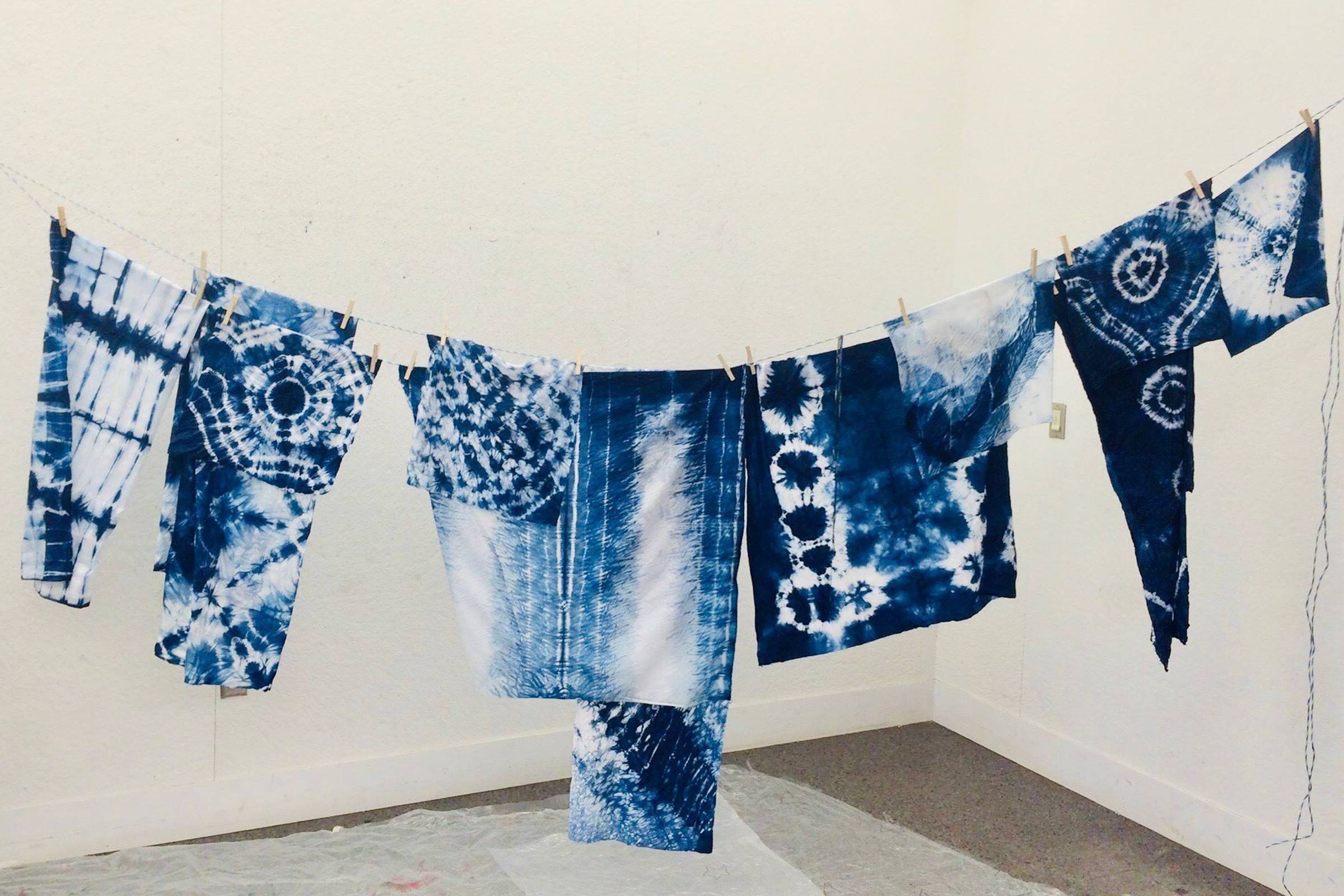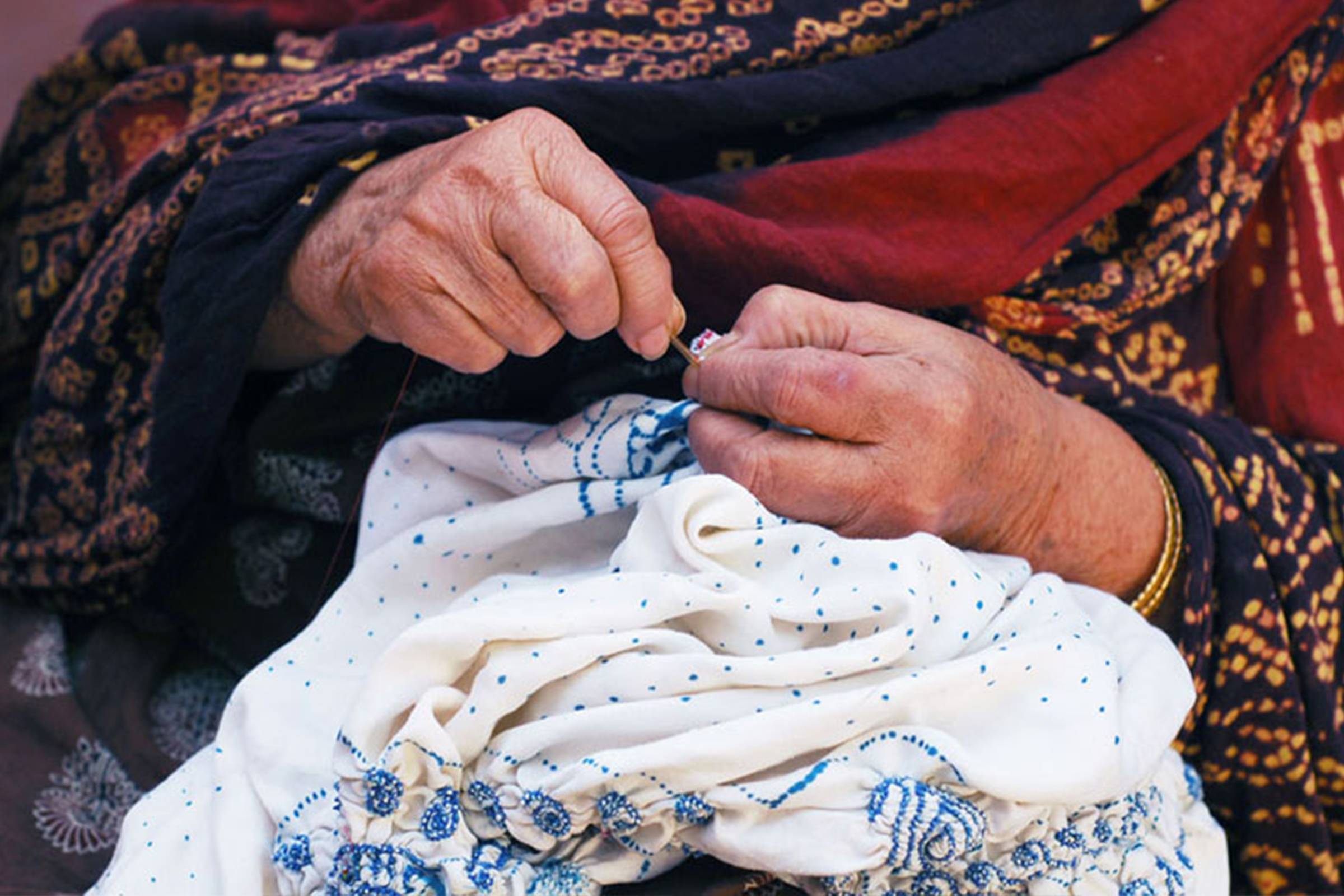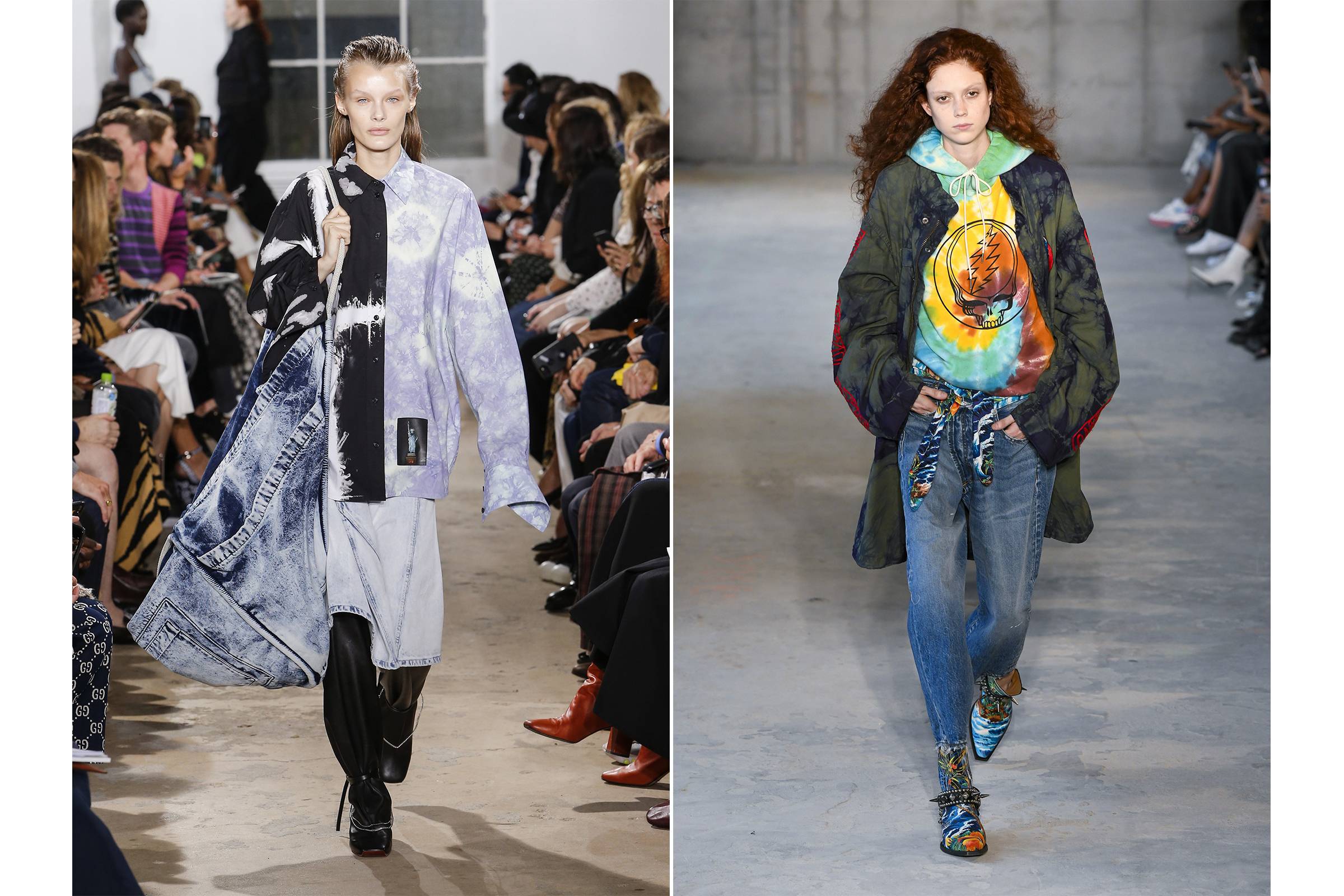What is tie dye hoodie? Tie Dye History
Tie-dyeing, method of dyeing by hand in which coloured patterns are produced in the fabric by gathering together many small portions of material and tying them tightly with string before immersing the cloth in the dyebath. The dye fails to penetrate the tied sections. After drying, the fabric is untied to reveal irregular circles, dots, and stripes. Varicoloured patterns may be produced by repeated tying and dipping in additional colours. This hand method, common in India and Indonesia, has been adapted to machines. See also resist printing.
Parallel to the politically turbulent landscapes of the 1960s, 2019 has provided volatile social and political environments, sparking the rise of yet another counterculture movement, one that is seemingly coinciding with the marketplace rise of tie-dye. On the surface, many attribute the rebirth of the psychedelic print to the wistful marketplace induced nostalgia and the universal yearning for simpler times. However, there are clear indications that this turbulent landscape has created a response to rebellion and a desire to reject social norms. With tie-dye infiltrating luxury runway shows such as Prozena Schouler, Stella McCartney, Collina Strada and R13, it is undeniable that fashion remains a political agent, however, it is unclear if as society is co-opting the counterculture symbol for their capitalist agenda can maintain the integrity of the rebellious swirls.
While one may assume that tie-dye originated with the Grateful Dead, the acid trips and the peaceful hippies of the 60s, the art form of tie-dye has been used throughout the globe as early as 4000 B.C. Indian Bandhani is a type of tie-dyeing that is used to decorate textiles through dye and the use of fingernails plucking the cloth into small bindings in order to form a figurative design. The term bandhani is rooted from the Sanskrit verb bandh, which means “to tie”. The Bandhani technique is closely interwoven with religion and ceremonial occasions such as marriage or wakes, and often utilizes certain natural dyes that represent the event.

Shibori dyeing
The second oldest tie-dye technique known to man is the Eastern Japenese version of fabric manipulation named Shibori. Using a variety of resist dyeing techniques, methods to shape and secure the textile and most typically used with indigo dye, Japanese Shibori was first recorded in the eighth century and is still practiced today. Although the use of dye and ties to manipulate fabric was far from a revolutionary concept, the use of bold colorways and various evolved techniques displayed within the 1960s and 1970s products created a unique category within the textile manipulation category, maintaining the integrity of Japanese Shibori and Indian Bandhani while paying homage to the roots of the process.
Although resist dying and shibori techniques were used in Western fashion before the 1960s, our modern understanding of tie-dye became popularized through hippie culture and the musical landscape of the psychedelic era. Through the mass market disruption of squeezable liquid dyes, RIT Dyes introduced an accessible and individualistic method of fabric manipulation during a time when society was rejecting societal norms and harsh restrictions following the civil unrest of the 1950s. Transcending levels of socio-economic status, the dyes allowed anyone to participate in the movement and create their own symbols of peace and love. RIT Dyes saw an opportunity for growth and funded several artists to produce several hundred unique tie-dye shirts to sell as during the 1969 Woodstock Festival in Bethel Woods, NY. This introduced the intersection between commercial profit and tie-dye, however, RIT Dyes was embraced by the culture, becoming the “official” dye of the hippie culture.
The psychedelic print represented a universal necessity for love and compassion in a turbulent political time filled with civil unrest, a lack of justice, political scandals and the Vietnam War. The youth culture rebelled against the conservative forms of dress and appearance that influenced their parents’ generation and moved towards a more simplistic form of representation. Hippies rejected all forms of the establishment and wished to be free from material trappings, and tie-dye was a natural outgrowth. The ability for a unique product at the end of each dye session promised individuality, something integral to the counterculture stance. Popular rock musicians such as John Sebastian, Jimi Hendrix, and Janis Joplin became symbols of the Woodstock movement, dressed in their own unique swirls of psychedelic colors. For those who found a home within the culture, tie-dye represented the rejection of moral customs of the established society. However, for those who rejected the hippie ideal, tie-dye was a symbol of drug abuse, tomfoolery, and unwarranted rebellion.

Bandhani tie and dye
While tie-dye outlasted the Summer of Love and the Woodstock Festivals, the psychedelic print began to fade in popularity in the mid-1980s. However, one subculture remained loyal to the colorful swirls: the Deadheads. The loyal fans of the Grateful Dead embraced tie-dye, utilizing concerts as a venue to trade and distribute unique dyes and garments. While the band disbanded in 1995, other cult classics such as Phish carry on the tradition.
Until recently, tie-dye was a friendly backyard activity for the youth, rather than a symbol of rejection for the establishment. However, in Spring 2019, high fashion luxury runway shows began to show elevated forms of the psychedelic print in sophisticated silhouettes. Chris Leba’s R13 Spring 2019 Ready-to-Wear catwalk demonstrated the connection between politics and high fashion, mixing army prints and bright tie-dyes.

LEFT: Proenza Schouler Spring/Summer 2019; RIGHT: R13 Spring/Summer 2019
Chris Leba told Business Insider, “In the Trump Era when right-wing politics is so loud, I think tie-dye can be viewed as a peaceful, but defiant protest against conservatives. In some ways, there are a lot of similarities in terms of the backdrop then and now. In the 60s, we had Nixon in the White House with students protesting against the conservative right. Now we have Trump in the White House with women, immigrants, and the LGBTQ+ community fighting for their rights.”
Other fashion powerhouses supported Leba’s sentiment, sending an array of elevated tie-dye silhouettes down the catwalk. From neon colorways to more muted tones, the swirls of the uprising were felt ominously by the onlookers. In a time where collusion, sexual assault, immigration, and healthcare have all seemingly lost their sense of importance in our White House, youth culture is once again demanding a change. Although the hippie culture rejected material goods, the new generation of unrest has yet to do so, finding inspiration from the highest level of luxury fashion. While Millennials are co-opting tie-dye, it can be argued that through the use of rebellion, the youth can maintain the integrity of the psychedelic print. However, it is challenging to defend the honor of the rebellious consumers who are purchasing a $1,200 Prada tie-dye jumper, it is important to recall original hippie culture embraced all who wanted to live compassionately and peacefully.
As we continue to navigate the turbulent social, political, and economic climate of the Trump presidency, it is necessary to maintain the integrity of the psychedelic print, and the mission of love and peace the colorful swirls evoked. Within high fashion, we must work to appreciate tie-dye and the counterculture movement it symbolizes, rather than appropriate the cause for monetary success. In a time where we are afraid for our individual rights, tie-dye is lending a voice to the youth that wishes to demand more.
Sweatshirts & Hoodie, Tshirts & Tank tops, Pants, tracksuit Manufacturer. Wholesale price Factory quality. Supprot Custom laber, Custom Logo, pattern, color.